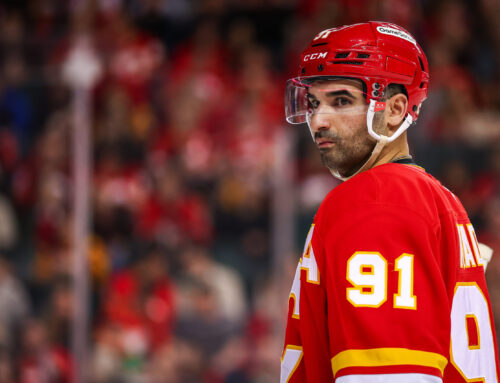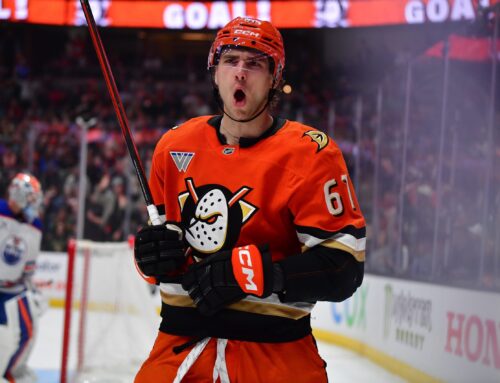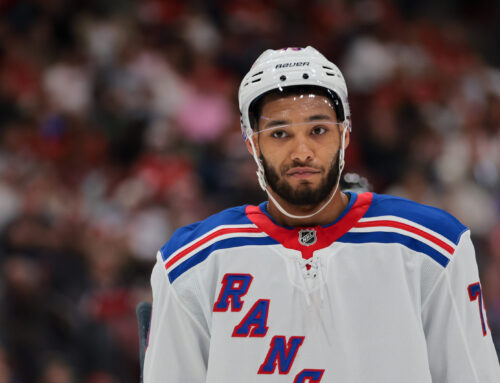
Projecting established players to put up a lot of points is easy. The difficult part is projecting what players are going to break out that no one really expects.
Last year, there were 36 players that hit 70 points, 12 of which hit that number for the first time. (For the record, those 12 were Nathan MacKinnon, Mathew Barzal, Mikko Rantanen, Aleksander Barkov, William Karlsson, Sean Couturier, Jon Marchessault, Vincent Trocheck, Alexander Radulov, Josh Bailey, Patrik Laine and Brayden Schenn.)
Those names run almost every stereotype in hockey. The budding teenager superstar (Laine). The young guy finally breaking out (MacKinnon). The complete surprise (Karlsson). The rookie (Barzal). The older player on a new team (Radulov). The guy finally getting to play with elite teammates (Couturier). The disrespected player getting a fresh start (Marchessault).
Generally speaking over the last few years, about one out of every three 70-point players is hitting that mark for the first time. That means you can expect a few fresh faces to crack 70 points this year. Some of the possibilities are obvious (Auston Matthews, Jack Eichel, Mitch Marner, Jonathan Huberdeau, etc.). However, I wanted to focus on players that may not be getting as much hype.
Here are 10 potential first-time under-the-radar 70-point guys. Keep in mind that I am not saying all of these players are going to reach 70 points, but there are good reasons why they might surprise.
10. Travis Konecny
This will be one of the longest shots to hit 70 points, but let’s remember how excellent he was in the second half last year when he was put on the top line with Claude Giroux and Sean Couturier. Konecny finished last year with 37 points in 45 games, a 67-point pace. His biggest problem is he doesn’t get enough ice time (even during his hot finish, he averaged 16 minutes a game). He was also on the second power-play unit for most of the year. At least one, if not both, need to increase quite a bit to push for 70 points.
I’m putting JVR under the category of “old guy who gets a 70-point season but later on everyone will say they saw it coming.” Actually, there are plenty of reasons to like JVR as a possibly 70-point threat. He’s going to a new team and will want to prove himself. He’s a volume shooter who can play on the top power-play unit. One of the biggest could be his time on ice. He’s seen his ice time drop from 21:03 in 2013-14 to 19:05 to 17:46 to 15:53 to 14:54 last season. Expect that trend to reverse in Philadelphia.
8. Sam Reinhart
Reinhart is an interesting case of a player who performs better away from an elite teammate. He spent the first half of last year playing with Jack Eichel, but had only 13 points in his first 41 games. He was moved away from Eichel and onto the second line, and he responded with 37 points in his last 41 points (a 74-point pace). Like everyone else on this list, he’ll need to have a lot go right for him to hit 70, but he is potent on the power play, is improving every season and is about to start his fourth NHL campaign (if you believe in the fourth season breakout theory).
A lot of people like Galchenyuk to be much better in Arizona than in Montreal. How much is still open for debate, but Galchenyuk does have a history of performing when given the opportunity. In 2016-17, while centring the top line with Alexander Radulov and Max Pacioretty, Galchenyuk was 11th in the league in points and almost a point per game when he went down with an injury in December. When he returned, he wasn’t reunited with those two and his ice time kept dropping. In Arizona, he’s going to get lots of opportunities to prove himself, and will get to play with better players on a more consistent basis.
6. Dylan Larkin
The biggest obstacle keeping Larkin from hitting 70 points is his power play production. Larkin had 63 points last year, but only eight points with the man advantage, partly because he only played on the second unit. It does almost feel like he should be a shoo-in for the 70-point mark. He shoots the puck often, gets almost 20 minutes per game and seems to have chemistry with whomever he plays with. There’s also the chance that he can grab Henrik Zetterberg’s minutes on the top power-play unit if Zetterberg is out for the year.
5. Bo Horvat
There’s an excitement of Horvat and Brock Boeser playing the full season together. Last year, Horvat had 36 points in 48 games (a 62-point pace) before Boeser went down with an injury in March, after which Horvat had eight points in 16 games. The Canucks have a top line and a bunch of third- and fourth-line players, so there’s no danger in Horvat losing ice time if he goes through a bad stretch.
4. J.T. Miller
If you’ve already bought Dobber’s guide, you already know how high he is on Miller (if you haven’t bought the guide, shame on you). Miller has shown improvement every year in the league, but really found new life when he was traded to Tampa. He wound up notching 10 goals and 18 points in 19 games playing with Nikita Kucherov and Steven Stamkos. The biggest worry for Miller is how talented the rest of the Lightning players are and the crazy amount of depth they have. It would be easy for them to swap in Brayden Point or Yanni Gourde on that top line.
3. Kyle Connor
Connor will probably spend the year on the top line with Mark Scheifele and Blake Wheeler. That’s pretty much all you need to know. If you need a little more reasoning, there’s the fact that he’ll probably crack 200 shots and he should see an increase in even strength and power play ice time. Don’t forget he has 12 points in 16 games when Scheifele was injured last January, meaning he can also produce without the team’s top player.
Schwartz is going to need some help to reach 70 points, but it is doable. The 26-year-old had 59 points in 62 games last year, and is a fixture on a line with Vladimir Tarasenko and Brayden Schenn. I expect those three to stick together this year and a bounce-back season for Tarasenko will help Schwartz. Schwartz’s biggest problem is that he doesn’t produce on the power play, despite averaging the second-highest time on ice on the Blues last year. If he can start putting up power-play points and play close to 82 games, 70 points should be within reach.
Dubois had a pretty good rookie season, but he really started to find his stride as the season went on and he started playing with better players. He wound up playing with Artemi Panarin, and finished with 26 points in his last 31 games (a 69-point pace). Dubois will play the whole season this year on the team’s top line and should also get more power-play time.





 EDM
EDM PIT
PIT TOR
TOR VAN
VAN FLA
FLA MIN
MIN DET
DET COL
COL CBJ
CBJ
